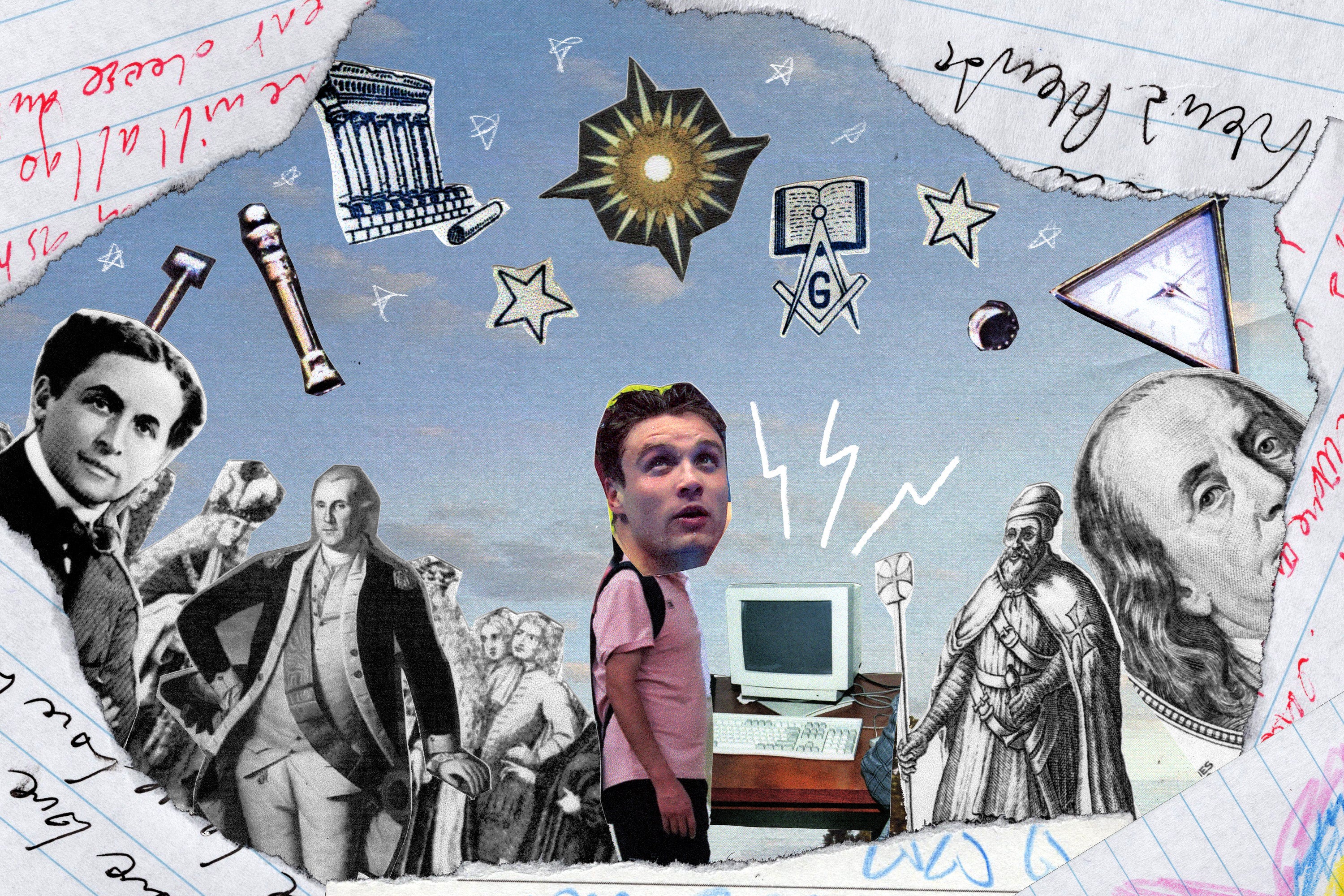Find Out How to Join Freemason and Gain Lifelong Connections
Find Out How to Join Freemason and Gain Lifelong Connections
Blog Article
Checking Out the Mysteries of the Freemason: What You Required to Know
The Freemason, a term often shrouded in intrigue and controversy, represents a complex tapestry of historical fact and modern-day myth. Established in the late 18th century, this secret society was originally rooted in the Knowledge's ideals however has actually since come to be associated with conspiracy theory concepts concerning elite control. As we navigate the origins, essential figures, and the plain comparison between misconception and fact, one should think about exactly how these stories affect modern understandings of power and privacy. What might be exposed through a closer exam of these components can test long-held assumptions regarding the shadows that remain in our society.
Origins of the Freemason
The origins of the Freemason are steeped in a mix of historical intrigue and ideological fervor. Established in 1776 in Ingolstadt, Bavaria, by Adam Weishaupt, the group was originally created as a secret society targeted at advertising Knowledge perfects such as factor, secularism, and the separation of church and state. Weishaupt, a professor of canon regulation, looked for to test the prevailing authority of the church and state, which he saw as overbearing institutions suppressing intellectual and personal flexibility.
The Freemason looked for to hire influential participants from numerous societal markets, including national politics, academic community, and the arts, to foster a network dedicated to these Enlightenment principles. The society operated under a shroud of privacy, utilizing coded language and routines to safeguard its participants from mistreatment, specifically offered the repressive environment of the moment. Nevertheless, the Freemason encountered significant opposition from both governmental authorities and spiritual institutions, which saw the group as a hazard to their power.
Trick Figures and Members
Who were the pivotal numbers that formed the Freemason's very early influence and instructions? The Bavarian Freemason, established in 1776 by Adam Weishaupt, arised as a response to the oppressive societal frameworks of the time. how to become a freemason. Weishaupt, a law teacher, pictured the organization as a way to advertise Enlightenment ideals such as reason, secularism, and equal rights. His initial employment initiatives included prominent intellectuals, such as Baron von Knigge, who played a crucial role in broadening the team's subscription and organizational framework.
One more substantial number was Johann Gottlieb Fichte, a noticeable theorist whose ideas on nationalism and education and learning resonated with the Freemason's goals. Fichte was not a formal member, his philosophical bases affected the group's ideological background. Additionally, numbers like the writer and philosopher Johann Wolfgang von Goethe were connected with the broader intellectual movements of the moment, although their direct involvement with the Freemason remains questioned.
These essential figures added to the Freemason's very early instructions, pressing the borders of political and social thought, while their collective efforts aimed to test well-known standards and cultivate a climate of dynamic adjustment in Europe.
Misconceptions vs. Reality
Several misconceptions surround the Freemason, often blending reality with fiction in a way that obscures its true nature. The idea that the Freemason proceeds to apply substantial influence over world occasions is a myth - how to become a freemason.
An additional widespread myth is that the Freemason makes up a network of elite people manipulating international events. Actually, benefit of joining freemason many conspiracy concepts overemphasize the group's value, associating unfounded motives to social trends and occasions. This has led to an oversimplified view of complex concerns.

Modern Interpretations
Contemporary interpretations of the Freemason typically mirror wider societal anxiousness and an attraction with privacy and power. This modern-day lens often connects the Freemason with conspiracy theory concepts that recommend a covert elite manages globe events, controling governments and economies for their very own gain. Such stories tap into a deep-rooted wonder about of authority, particularly in times of situation or social turmoil.

Additionally, some modern-day analyses mount the Freemason as an allegory for the intricacies of globalization and the interconnectedness of significant people and companies. This perspective urges a crucial assessment of just how power characteristics run in today's world, highlighting the balance in between openness and secrecy in governance and business practices.
Cultural Impact and Legacy
Influenced by centuries of intrigue, the social influence and legacy of the Freemason prolong much beyond its historical origins. This secret society, established in the late 18th century, has penetrated numerous facets of prominent society, from literary works and film to songs and art. The principle of the Freemason has evolved right into an icon of conspiracy concepts, commonly representing a regarded covert power adjusting worldwide occasions.
In literature, writers like Dan Brown have actually woven the Freemason into detailed stories, fascinating visitors with styles of privacy and power. Films such as "National Prize" and "The Da Vinci Code" even more bolster the appeal of the culture, mixing fact with fiction to create appealing narratives.
The Freemason's impact also extends into music, with musicians referencing the company to stimulate motifs of disobedience and societal critique. This portrayal has actually contributed to a fascination with the idea of private groups managing the bars of power, reflecting social stress and anxieties regarding authority and transparency.
Eventually, the Freemason's tradition is a complex tapestry of misconception and reality, forming assumptions of privacy and control in modern discourse. Its enduring existence in culture underscores humankind's seasonal mission for understanding covert realities.
Verdict
The exploration of the Freemason exposes an intricate interaction in between historical realities and modern myth-making. Founded in the Enlightenment era, this society aimed to test oppressive structures, yet its heritage has been eclipsed by conspiracy theories that recommend elite control. Understanding the differences in between the initial ideals and modern interpretations is essential for understanding the sustaining fascination with the Freemason and its significant impact on cultural stories surrounding power and secrecy in culture.
Report this page